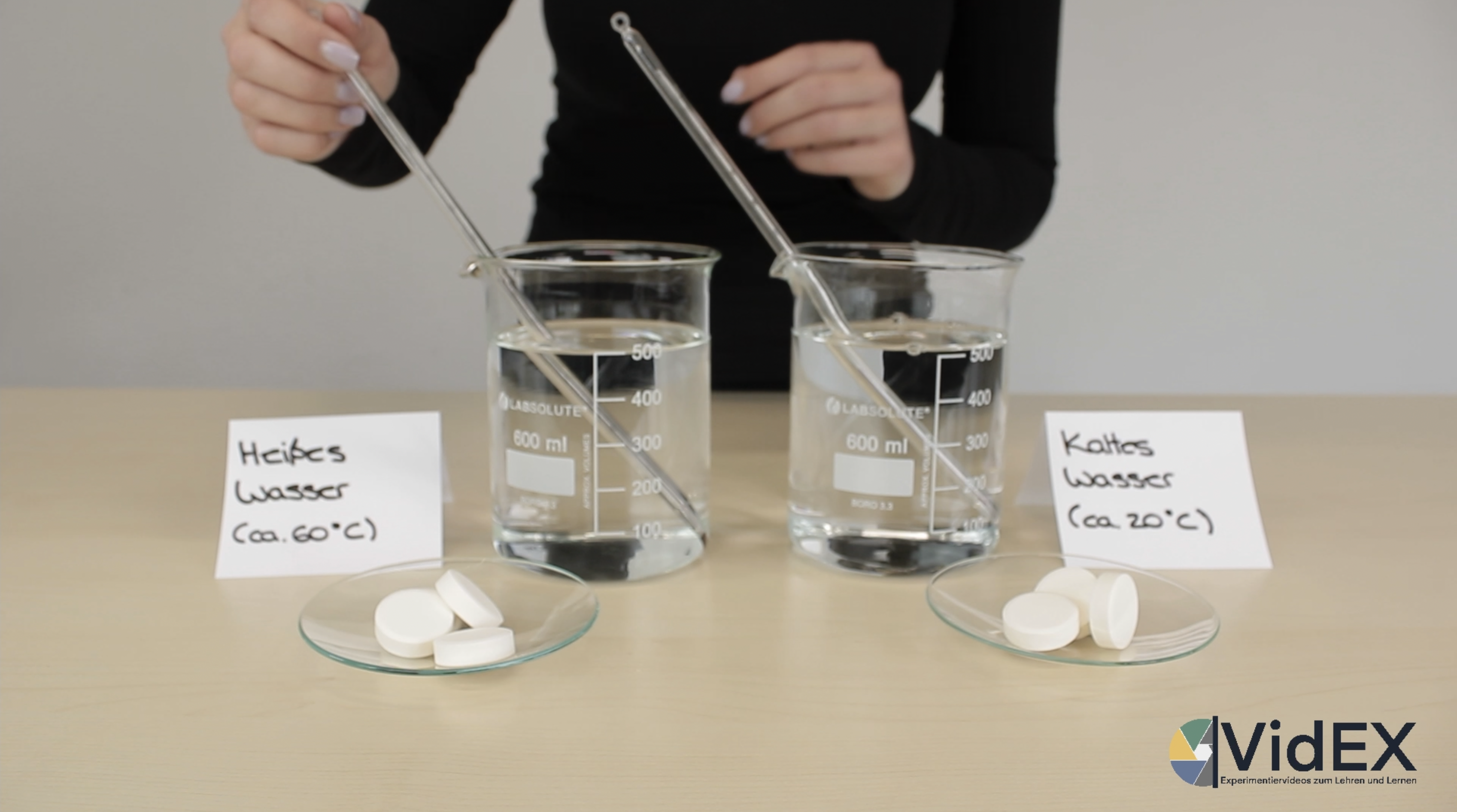
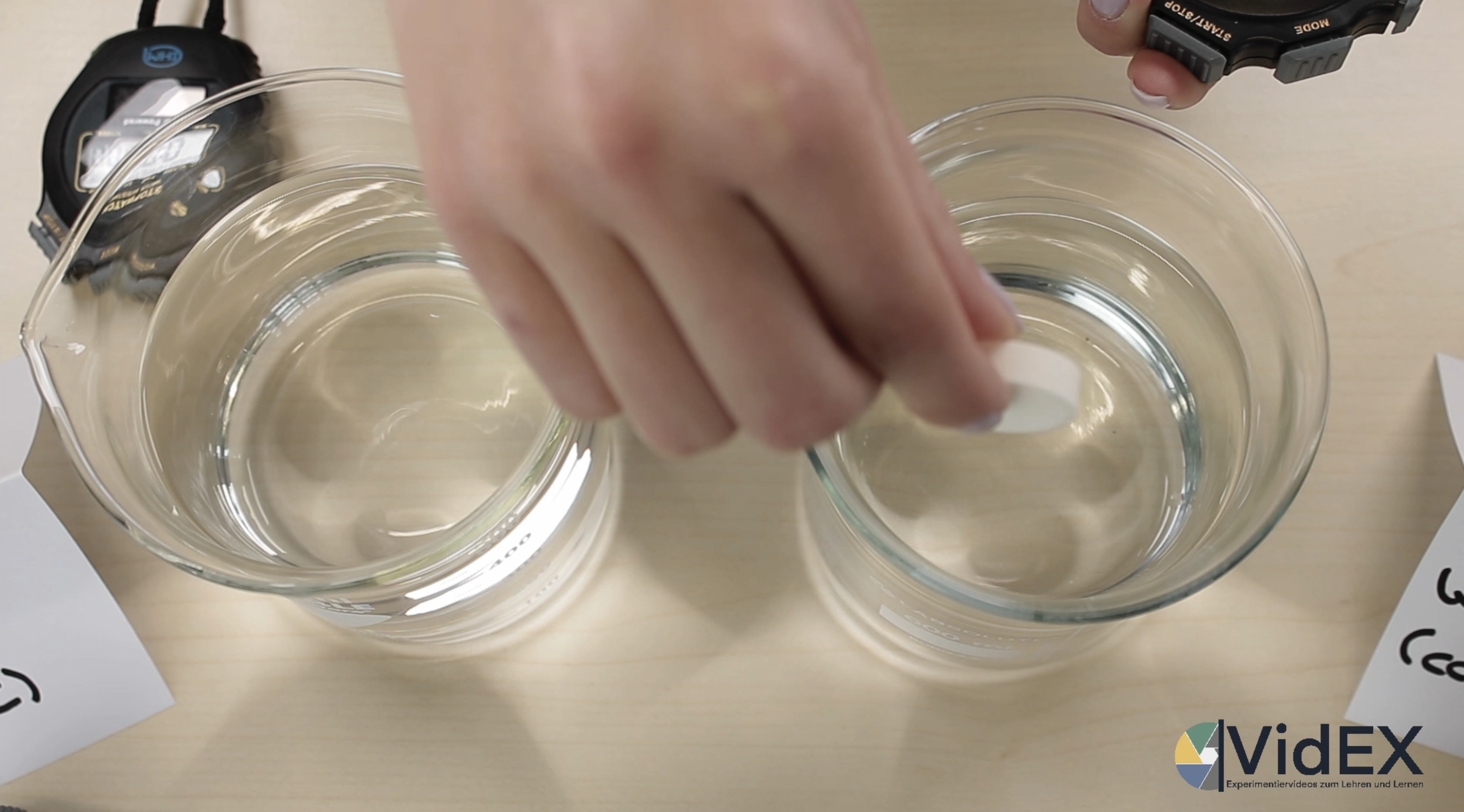
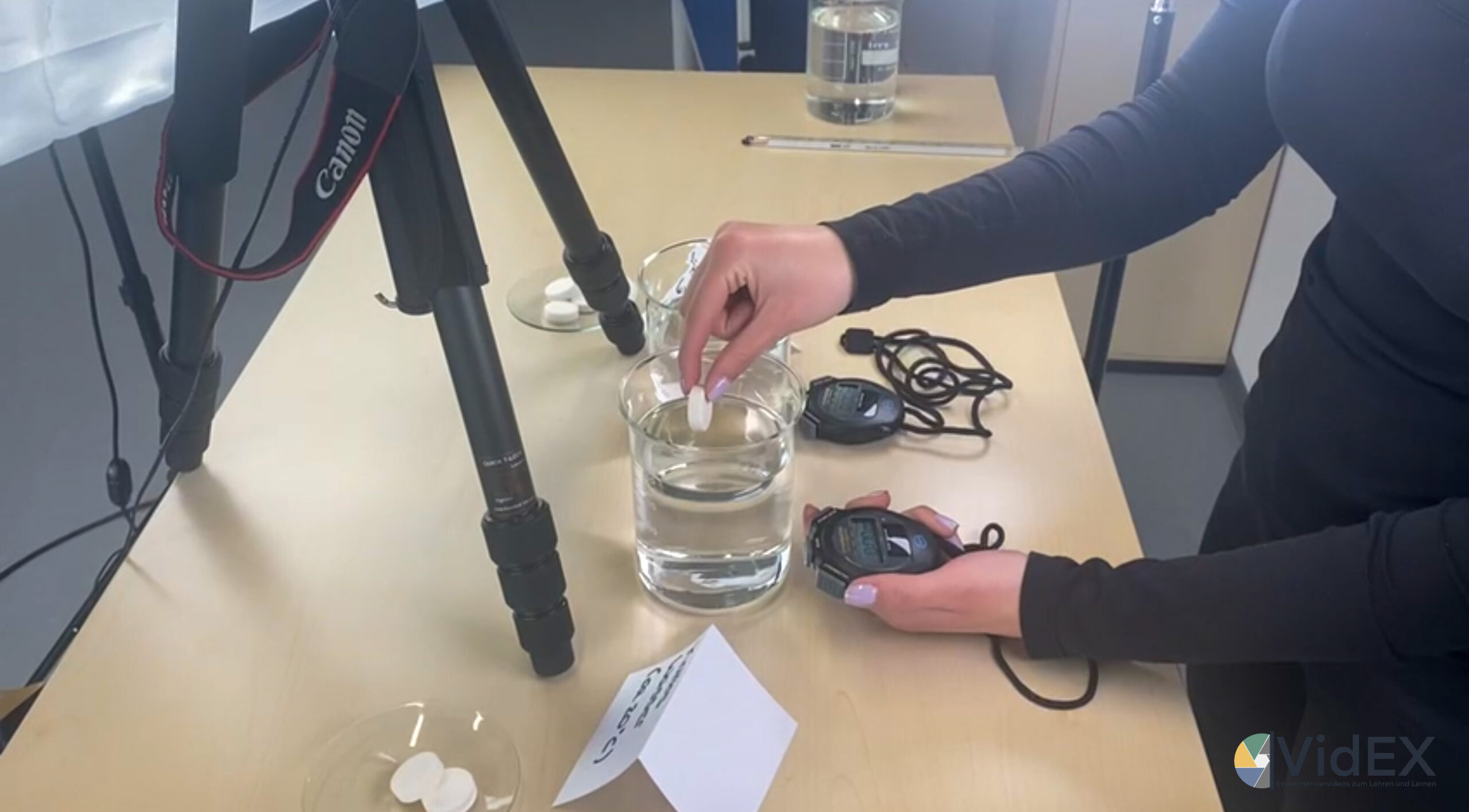
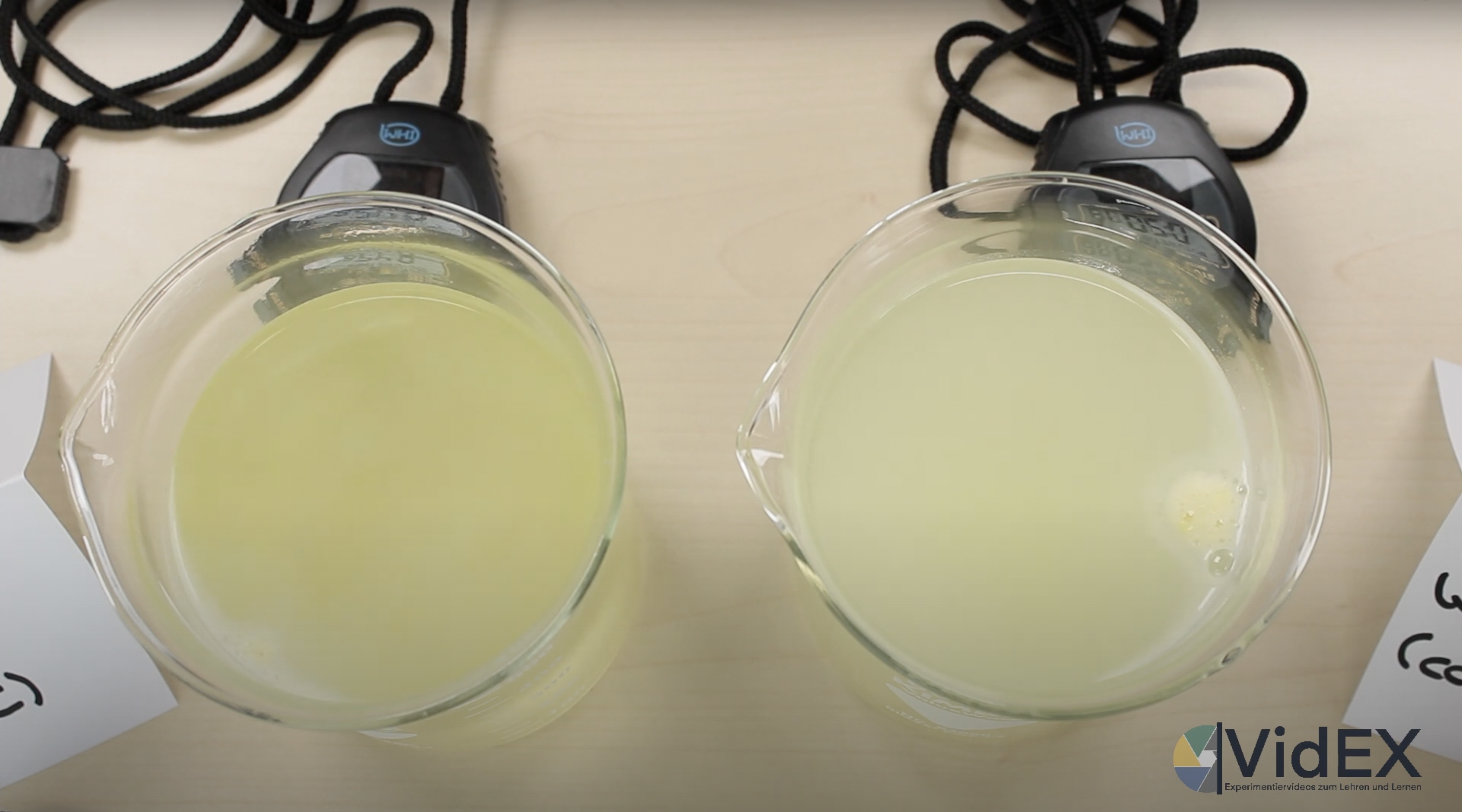
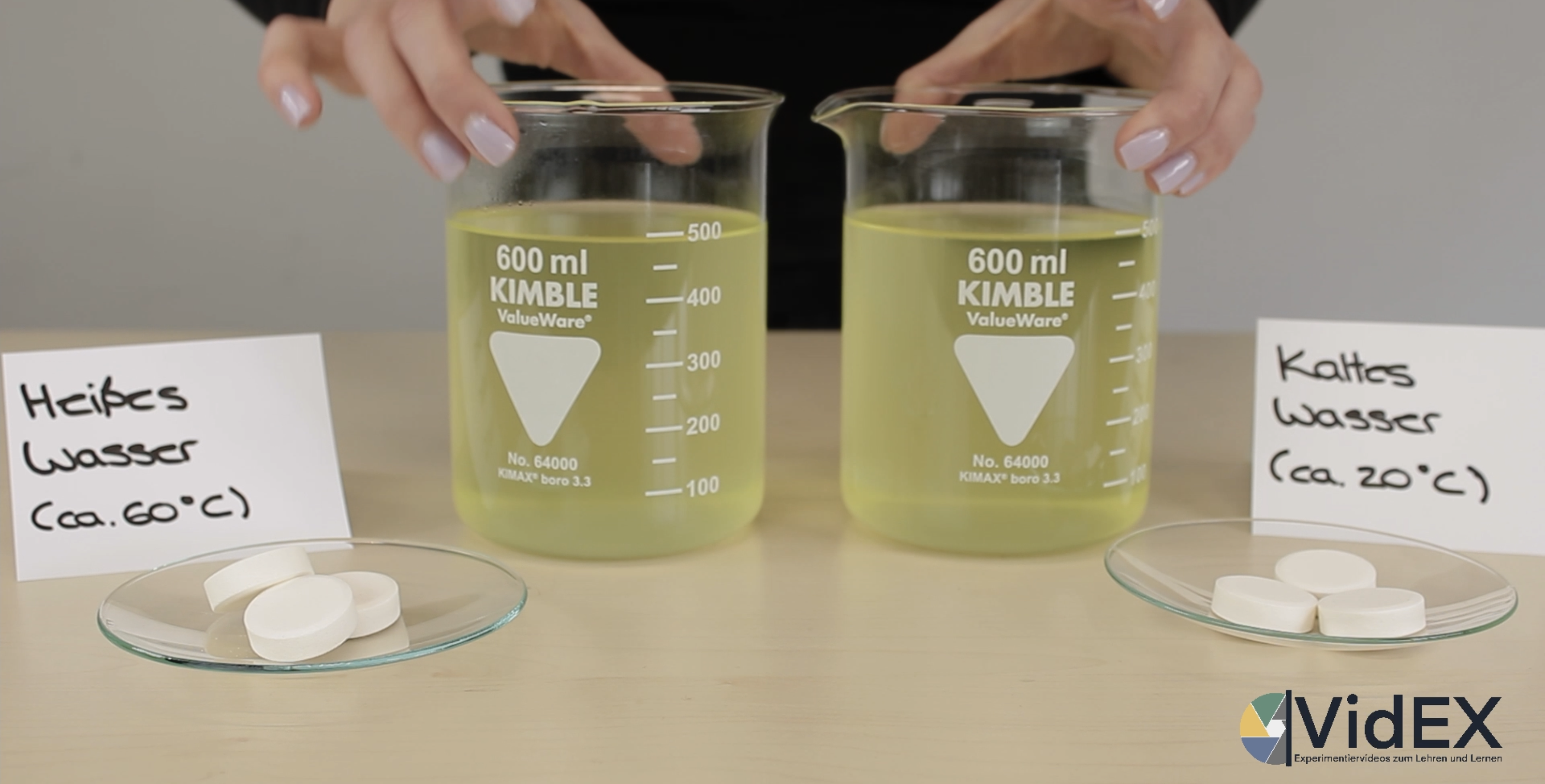
With this first module, we want to provide support material for your distance-, alternating- and presence teaching and learning as well as clarify the idea and the concept of VidEX. Therefore, we first selected a very simple experiment, not only related to biology, but to science in general. Combined with Tutorial 1 on designing experimental videos, you have a complete package for your students and digital supported, exploratory lessons.
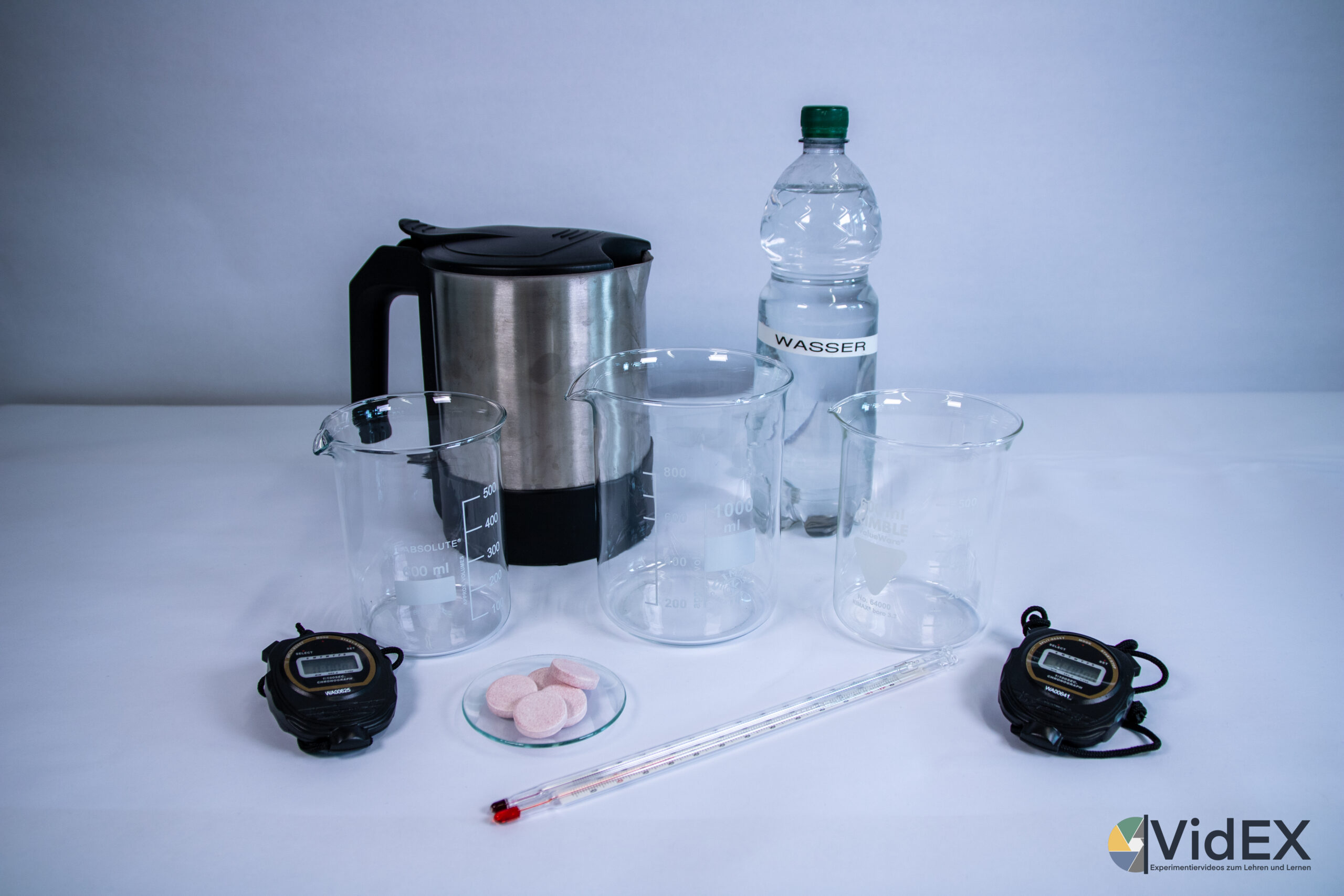
With VidEX, we don´t want to ban real experiments from the classroom, but we want to show how videos can make scientific work an even more interesting topic in your lessons. Your students can experiment by themselves, generate, and analyse data or go on a troubleshooting mission. For this purpose, we have created different versions of the “Effervescent tablet experiment”. This allows you to differentiate and adapt the lessons to suit your student group and your time and methodological lesson management.
The following exemplary lesson scenarios describe possible didactic integrations of the video material about the “Effervescent tablet experiment”:
Previous classroom setting: planning/ performing of the experiment @home or @school by the students.
Classroom setting with VidEX: The pupils compare planning and/or performing their experiment with the video. They can combine their collected data with the data from the video and evaluate them separately or all together. The advantages and disadvantages can of each experimental approach can be worked out and “improvements” can be discussed (e.g. more than two differently tempered approaches, more accurate temperature settings).
Previous classroom setting: Students formulate hypotheses for the experiment @home or @school.
Classroom setting with VidEX: Pupils observe the experiment, record the data by parallel time stopping to the measurement runs and analysing them. This can be performed individually or in groups, based on the complete or shortened video or in group work with the individual measurement clips. It can be linked back to the formulated hypotheses and an result interpretation can take place.
Previous classroom setting: Tutorial one was analysed in relation to the VidEX experimental video regarding the methodological errors during the experiment.
Classroom settings with VidEX: Pupils compare the errors in the experimental procedure in the experimental video with those in the tutorial. Potential errors during the procedure, set-up, etc. are reflected upon and an error analysis is developed as an important step in the result interpretation.
The (differentiated) video material “Effervescent tablet experiment”
Video version 01 Experiment (complete)
The video shows the set-up and all four measurements. Between each measurement, the setup is rearranged and the temperature in the warm experimental setup is adjusted.
Video version 02
Experiment (shortened, labelled)
In the video, the setup is shown once at the beginning. All four measurements follow one after another, with no conversion between the measurements. The measurement results are labelled at the end of each measurement.
To video version 02Video version 03a Experiment (measurement clips)
There are four measurement clips available. Each contains the setup followed by the respective measurement.
Video version 03b
Experiment (measurement clips, labelled)
There are four measurement clips available.Each one contains the setup followed by the respective measurement. This version contains clips labelled measurement results.
Here you can additionally download the image with all materials needed for this experiment. It can serve as a support for your students and give a first impulse for planning the experiment.